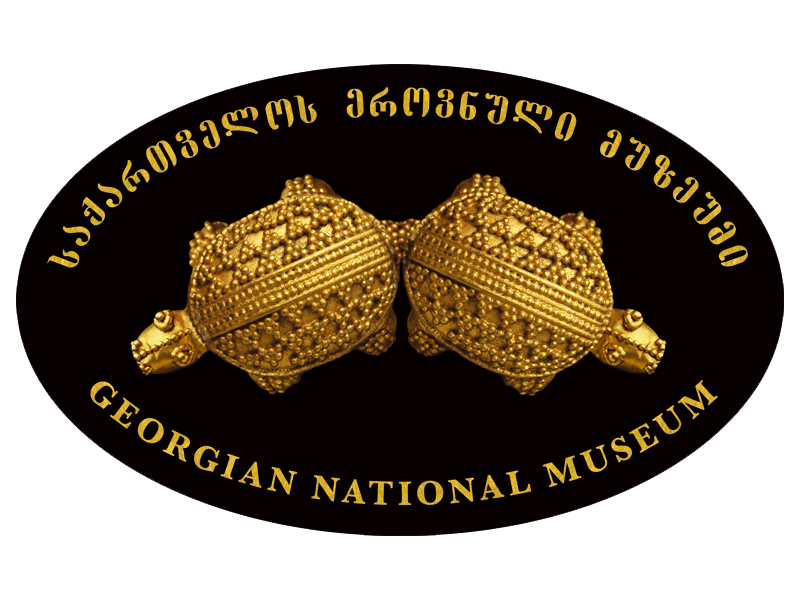Moambe is a scientific journal published by the Georgian National Museum. Articles are either in Georgian or in English, with both Georgian and English abstracts. The journal is not limited to the researches from the Georgian National Museum, but open to everyone associated to different institutions. Article submissions should fit one of the following categories:
Research recommended number of words -5000
Articles in this category should present recent research, being published for the first time in Georgia. Thematically, the work should relate to one of the humanities or other fields prioritised by the Georgian National Museum’s collections and laboratories; for example, ethnography, art history, archaeology, palaeontology, conservation studies, etc.
Discussion recommended number of words -3000
The aim of this category is to stimulate scientific discussion. Articles should be on scientific topics that are open to debate among scholars.
Reports recommended number of words -1500
Articles in this category should report on fieldwork conducted in Georgia and its adjacent regions during the previous two years.
Review recommended number of words -1200
Reviews of exhibitions and books published by the Georgian National Museum
Peer review
Two categories of article in Moambe will be peer reviewed: „Research“ and „Discussion“. Articles of these kinds will be subject to a two-stage process: first, they will be reviewed by the editorial board to determine if they meet the standards of the journal. Those articles that progress to the next stage will be peer-reviewed by an anonymous assessor, with reference to guidelines that have been prepared by the editorial board. Articles in the „Report“ and „Review“ categories will not be peer-reviewed. The decision as to whether they are published will be based on the evaluation of the editorial board alone.
Instructions for submitting an article
- Articles may be submitted electronically (only) via the following email address: – Moambe@museum.ge
- Articles should be sent as Word documents, formatted as follows:
- a separate file with the title of the article and the author(s) full name(s), affiliation(s) and contact information.
- a separate anonymised file that includes:
- Abstract (100–150 words) in the language of the submissionი
- Main text
- Bibliography
- Figure captions
- Please do not insert figures into the Word document. They should be sent separately in JPG, TIF and PNG format. The resolution should be no less than 1200 dpi for photographs and 600 dpi for line drawings.The source of each figure should be acknowledged in the caption, with copyright information included where appropriate
- In the body of text, figure numbers should be indicated in round brackets in bold; for example,(Fig.1)Tables should be provided as either Word or Excel files.
- For Georgian text, 12pt SYLFAEN font should be used; for English, 12pt Times New Roman font. Text should be formatted with line Spacing – 1.5. For English-language submissions British rather than American spellings should be used (for example, ‘colour’ not ‘color’).
Bibliographical references
The journal uses the APA referencing style, which includes in-text citations – that is, author(s), date of publication and page number wherever relevant – all placed inside round brackets. Footnotes should not be used. References in the bibliography must be listed in alphabetic order. In English articles, Georgian and other non-Latin text is transliterated and placed in square brackets.
Citation Examples:
Article
Japaridze, O. 1991
„Colchian Axe [Kolkhuri culi],“ Moambe , Bulletin of S. Janashia State Museum.16B:5-10
Chapters of a Book
Akhundov, T. 2014.
“At the Beginning of Caucasian Metallurgy,” in Problems of Early Metal Age Archaeology of Caucasus and Anatolia, Edited by G. Narimanishvili, pp.11-16. Tbilisi: Georgian National Museum
Book
Japaridze, O. 2003
At the Origin of Georgian History[Sakartverlos istoriis sataveebtan].Tbilisi: University Publications
- In Georgian text, centuries should be written in Roman numerals rather than Arabic. In English text, centuries can be indicated in Arabic numerals.
- Numbers above 10 should be written as numerals, except at the beginning of a sentence, where they should be spelt out. If a number occurs in a phrase in which most of the numbers are above nine, use Arabic numerals for all..
- Abbreviations such as BC, AD or BCE and CE should be typed without full stops.
- Common Latin abbreviations such as ‘etc.’ and ‘e.g.’ should be avoided in the body of the text. They can be used in tables.
- In case of uncalibrated dates, BP should be used or uncalibrated should be indicated.
